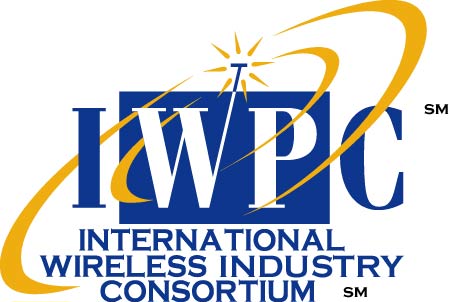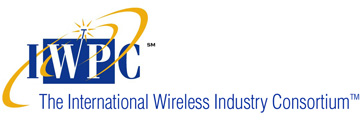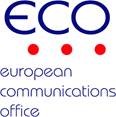Scalable Active Sensor Architectures
Technologies for Automotive Applications from NCAP to Highly Automated Driving
Hosted by:

SOLD OUT
When
February 24-26, 2015
Where
Maritim Hotel Ulm
Ulm, Germany
MORE
HOTEL INFO >>
Maritim is booked on February 24th
Click
here for more hotel
options
Register
Limited to 100 seats
First Registered, First Served!
Attendance open to Automotive Wireless Thrust or Full IWPC Members
Introduction
The workshop will assess and compare perception technologies, sensor architectures, as well as fusion approaches for applications ranging from driver assistance via active safety to automated or autonomous driving. Building on a core focus of radar, the workshop will consider the benefit of these technologies and applications with respect to ratings (NCAP, NHTSA, etc.).
Workshop Goals
- Understand Auto OEM roadmaps to incorporate environment perception technologies for applications from NCAP to highly automated driving
- Assess and compare radar and other active sensor technologies like time-of-flight methods, lidar, laser scanners, etc.
- exploring high resolution radar and situation adaptive radar sensors and radar sensor clusters
- Discuss scalability of the technologies necessary for NCAP, active safety, highly automated and autonomous driving (scalability/flexibility of architectures, sensors, antennas, etc.)
Agenda
|
DAY 1 Tuesday PM
|
Drive demonstration at Daimler Group Research & Advanced Engineering Lab in Ulm to include: Product demonstration of active safety systems in current platforms, introduction to new vehicle platforms, radar driven applications in safety truck and new radar performance in research vehicles
|
Transport to site from Hotel Lab Tour is Full. Waiting list only at this time.
Registration at hotel at 12:30, bus to depart the hotel at 13:30, Demo to start at 14:00. |
||||||||||||
|
19:00 |
Evening Reception |
Hotel |
||||||||||||
|
DAY 2 Wednesday 08:00 |
Opening Remarks and Introduction |
 |
||||||||||||
|
09:00 |
Host Keynote Remarks
|
Future Challenges for Automotive Radar Manager, Active Sensors
|
||||||||||||
|
10:00 |
Networking Break |
|||||||||||||
|
10:40 |
Auto OEM Perspectives
|
Raw Sensor Data Interfaces Enabling Highly Automated Future Mobility Manger/Connected Drive Projects
Fusion-Based Advanced Driver Assistance Systems Sr. Project Engineer
|
||||||||||||
|
12:00 Noon |
Networking Lunch |
|||||||||||||
|
13:00 |
Auto OEM Perspectives (continued) |
The DriveMe Project-A Research Project Involving 100 Autonomous Vehicles on Real Roads Technical Expert
|
||||||||||||
|
13:40 |
European Frequency Regulation - Considering Future Intelligent Transportation Services, from Urban rail systems applications towards driver-less / more autonomous vehicles |
On-Going Activities in the CEPT (European Spectrum Regulation) for Applications in Transport and Traffic Telematics Including Sensors Spectrum Management Expert and Chair of WG FM Maintenance Group
|
||||||||||||
|
14:20 |
Tier 1 Perspectives - Frequency Regulation |
Frequency Regulation and Global Harmonization EMC Manager
|
||||||||||||
|
15:00 |
Networking Break |
|||||||||||||
|
15:40 |
Panel session led by IWPC Working Group Leadership:
Performance Metrics for Automotive Radar
|
Host, Auto OEMs, Tier-1s and Working Group Leadership
|
||||||||||||
|
17:00 |
Adjourn |
|||||||||||||
|
18:30 |
Networking Dinner (Ratskeller Ulm) |
Bus transportation provided to and from hotel |
||||||||||||
|
DAY 3 Thursday 08:00 |
Tier 1 Perspectives, continued
|
Safe and Dynamic Driving towards Vision Zero Radar Algorithm Engineer
Contribution of Radar Sensors for Automated Driving R&D Director of Technical Product Line Radar
A Scalable 79GHz Radar Sensor Senior Director, Radar Development
|
||||||||||||
|
10:00 |
Networking Break |
|
||||||||||||
|
10:40 |
Technology Enablers, Trends & Innovation
|
Results from Fully-integrated 79GHz Radar-on-Chip Development Program Director
Intelligent Sensor Systems Towards Automated Driving Business Line Manager
CPU Technology for ADAS Applications Director Automotive Segment
|
||||||||||||
|
12:15 |
Networking Lunch |
|||||||||||||
|
13:15 |
Technology Enablers, Trends & Innovation (continued) |
Controlled Dielectric Materials for 24 GHz to 77 GHz+++ Auto Radar PCB Platforms CTO
Electromagnetic Simulation Approaches for Automotive Radar Components and Subsystems Senior Application Engineer
|
||||||||||||
|
14:15 |
Networking Break |
|||||||||||||
|
14:45 |
Technology Enablers, Test and Measurement Perspectives
|
Comprehensive Testing of Wideband Automotive Radar Technology Manager T&M
Test & Measurement Enablers for Automotive Radar Senior Development Engineer
|
||||||||||||
|
15:45 |
Closing Panel |
Host, Auto OEMs and Tier 1s |
FAQs
- What is the deadline for presentation/handout materials?
- What can I do to prepare for speaking an at IWPC workshop?
- Who are the attendees?
- What are the costs/registrations fees?
- Hotel information?
- What are the travel options from the airport to the hotel?
- Are there any audiovisual requirements?
- Will business cards be collected?
- What is the dress code?
- How will handout materials be provided?
- What is the deadline for
presentation/handout materials?
Deadline for electronic version of presentation/handout materials: Friday, February 13, 2015.
- What can I do to prepare for speaking an at IWPC workshop?
Click on the link below for a short video guide regarding preparing for and improving your IWPC presentation:
- Who are the attendees?
- We do not permit the Press.
- We do not permit Analysts.
- We do not permit Consultants.
- We do not permit 3rd party sales reps.
- We only permit "first hand knowledge experts" in business and technology issues, prepared to contribute to the discussion.
- What are the costs/registrations fees?
ALL Hosts, Speakers, Panel Members and Attendees will be asked to cover out-of-pocket workshop costs such as conference room costs, food (Social Reception plus First Day breakfast/lunch/dinner plus Second Day breakfast/lunch plus Breaks), audio/visual costs, etc.
These costs will be $1385 (USD) per person. (For IWPC Members only.)
ALL Hosts, Speakers, Panel Members and Attendees will be asked to pay this fee in advance with either Visa, MasterCard, American Express, cash, personal check or business check. Make checks payable to IWPC.
- Hotel information?
Maritim Hotel Ulm
Basteistrasse 40
Ulm Germany 89073
Phone: +49 (0) 731 923-0
Hotel WebsiteThe IWPC room block rate is 127.00 Euros single room.
Reservation requests can be sent to: [email protected]
The cut-off date for reservations is Monday, January 12, 2015. After that date, rooms cannot be guaranteed at the IWPC rate.
Maritim is booked on Tuesday, February 24th. More hotel options (No special rate applies):
Best Western Plus Atrium Hotel
Eberhard-Finckh-Straße 17
89075 Ulm
0049731 92710
Golden Tulip Parkhotel Neu-Ulm
Silcherstraße 40
89231 Neu-Ulm
0049731 80110
InterCity Hotel Ulm
Bahnhofsplatz 1
89073 Ulm
0049731 96550
Comfor Hotel
Frauenstraße 51
89073 Ulm
0049731 96490
LAGO hotel & restaurant am see
Friedrichsaustraße 50
89073 Ulm
0049731 2064000
Email: [email protected] - What are the travel options from the airport to the hotel?
Directions and transportation options will be posted as soon as possible.
- Are there any audiovisual requirements?
A Computer Projector will be available for the speakers.
In addition, we audiotape all presentations and the interactive discussions. Post workshop, presentations are made available to IWPC Members on the IWPC WEB site, along with “recordings” of all presentations and panel sessions.
- Will business cards be collected?
Business cards will be collected at the door from all attendees. We will make copies of these cards, which will be available to all who provided a business card.
- What is the dress code?
Business casual suggested. No ties, please!
- How will handout materials be provided?
For ALL IWPC members:
All IWPC members are invited to submit materials to be included in the online workshop folder in the IWPC Research Library. This should NOT BE SALES MATERIALS. Rather, we suggest it contain technical information about your technology as it relates to the workshop topics.
For all companies who will be making a presentation at the Workshop:
You are invited to submit an advance copy of your presentation, complete with graphics and illustrations.
These materials will be included on the IWPC website Research Library.
Please submit these materials either by email, as a Word for Windows file, Power Point files or PDF files.
Please use this FREE FTP site to send electronic materials (any size file):









